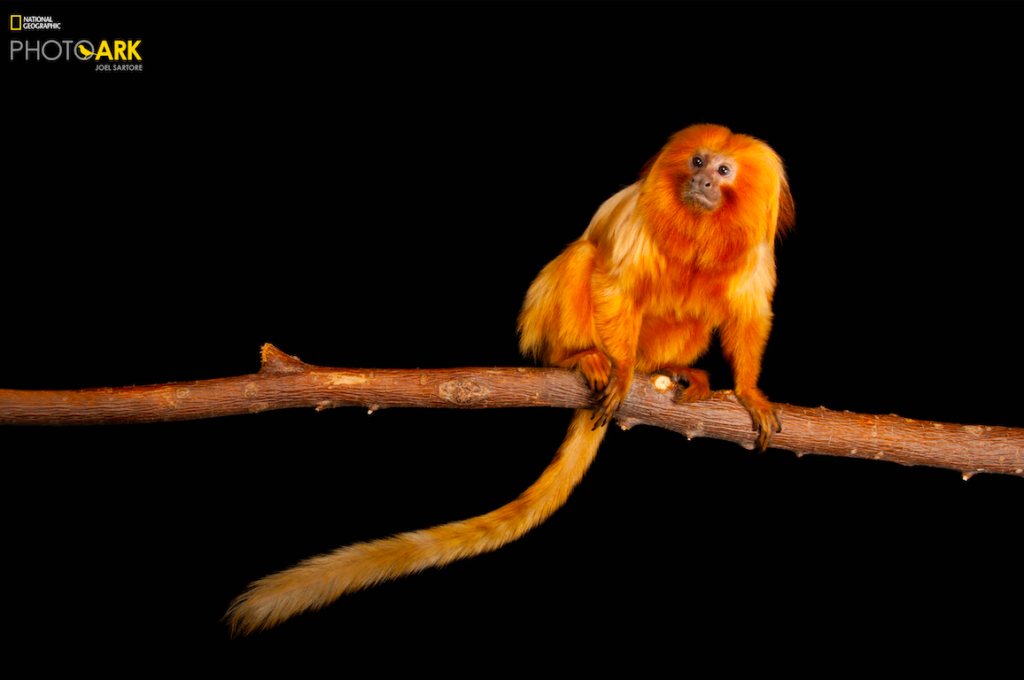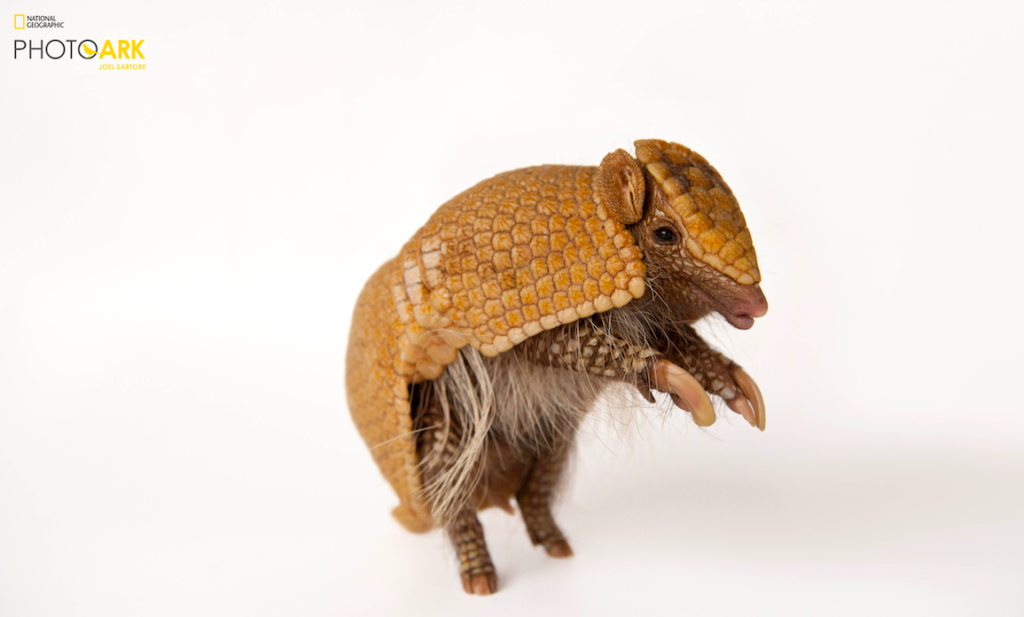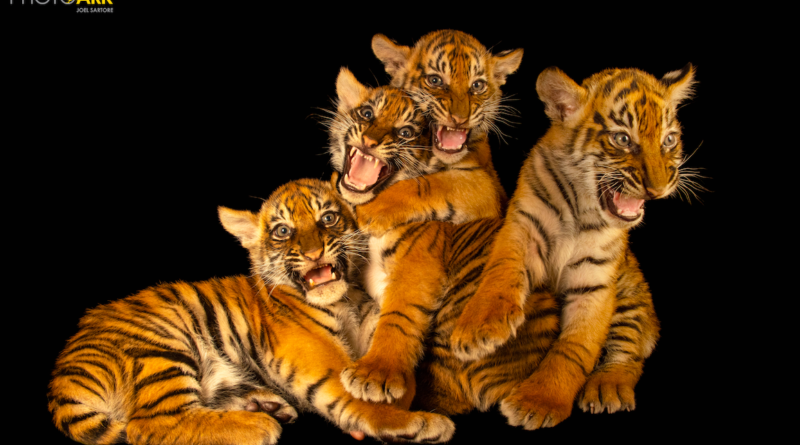INTERVIEW: This extinction flood can be stopped, but there’s a ‘Photo Ark’ just in case
Photo: Joel Sartore’s Photo Ark project includes images of many threatened species, including tigers. Photo courtesy of the Photo Ark and Joel Sartore / Provided by Nat Geo Wild with permission.
The images of animals that Joel Sartore has taken over the years are transfixing and evocative, full-body realizations of the wonders that can be found in the world of fauna. But after learning the back stories of these species and the very real challenges they face on a daily basis, the images take on a slightly different tone — the stark pictures grow ghostly in one’s mind, as if these tableau were from an ancient history book rather than the living world in the 21st century.
The reason for this visual somberness is because Sartore photographs threatened, endangered and rare species, many of which might not outlive this century if the world continues to plummet into a climate-change reality. Sartore documents these animals to motivates humans to do something about planet Earth, to save its creatures and its habitats.
The so-called Photo Ark project has been going strong as the world has been going weaker in the environmental department, and now Sartore is ready to welcome a new chapter in his photographic essay: a two-part special on Nat Geo Wild that outlines how these images came to be. The episodes will run Saturdays, Oct. 17 and 24 at 10 p.m. Audience members who tune in will get a chance to meet some of the 10,000 species that have been lensed by Sartore and his team.
“People are used to seeing the pictures and still photographs, but now they can see how they’re made, how we actually do the work,” Sartore said in a recent phone interview. “So we go to a bunch of different places, from a manatee in South America to the top of a mountain in Colorado for pika, which is a little rodent that lives under the talus slopes, the rock slopes there. Yeah, every animal is different, and every approach is different to these animals. So I think people will get a big kick out of it. There’s some humor, and it’s poignant at times. It’s just this scramble to get all we can as fast as we can while these species are still around.”
To find these animals, Sartore partners with wildlife biologists and researchers who are actively surveying and studying the species in the wild (or if there are so few individuals left, then he goes to zoos and aquariums). These researchers are regularly trapping the animals, so Sartore’s crew piggybacks on their efforts.
“We go with people that this is all they do, and they know that if we go in a certain month to get pika that we will get several in a day in their traps,” he said. “We’ll be able to put a couple in our little shooting tent, and we make the pictures and videos out of that.”
For this two-part TV special, Sartore goes from behind the camera to in front of it, and he hopes that by becoming a character himself the viewer will be able to better identify with the plight of these animals.
“Being in front of the camera is just fine, if that helps get people interested in the animals,” Sartore said. “It’s character-driven narratives that get people involved usually. You want to tell a story, and maybe it’s complex because with pika it’s climate change, with manatees it’s water quality and boat strikes. So it’s important for people to try to get a handle on why animals are going away. We can’t be really pessimistic about it. We have to be more upbeat and talk about solutions to saving species, so if I’m the messenger, that’s just fine. I prefer to let the animals do the talking if they could, but we can’t always do that.”


For years Sartore has been assembling the Photo Ark into what it has become today, which is a vast photographic collection of the world’s most interesting and threatened species. In the early days of the project, although National Geographic was on board as a partner, his work was largely out of the press and away from the public spotlight. In recent years, that has changed tremendously.
“So we’ve been doing this about 16 years now I think, so yeah I always figured that if people could meet these animals, they’d really care,” he said. “They just didn’t understand there was a problem is how I figured it, so I never lost faith or anything. I just was surprised it took as long as it did because a lot of these things are awful cute, and they’re in real trouble. I’m a big believer in the fact that people want to help, but they need to know what to do. And they need to know there’s a problem, and that’s where we come in.”
There have been distressing realities throughout the past 16 years. One species, for example, was the Rabbs’ fringe-limbed tree frog. Sartore photographed what was believed to be the final specimen, and after the individual died at the Atlanta Botanical Gardens, there’s a good chance it went extinct.
“It’s a big frog from Panama,” Sartore said of the species. “We’re pretty sure he was the last one. When I’m in the field, if it’s not pandemic time, and I’m actually traveling the world going to zoos and aquariums, I meet an animal or two a month that we’re pretty sure won’t make it within the next 10 or 15 years. But I don’t ever let it get me down because I figure there’s lot of other animals that can be saved, and we’ll tell the story as well as we can on these animals that are critically endangered or very near extinction. … We’ll try to get the world to know them because this has dire consequences for us as well. We’re on track to lose half of all species by mid-century, and if that happens it’s folly to think that people will be just fine. As these other animals go away, so will we. We have to have them to survive ourselves, especially the insects that pollinate our fruits and vegetables. It’s very important for people to understand that there’s a lot more to our survival than politics and sports. That’s what we’re up against, trying to be entertaining.”
He added: “The primates and the birds can’t live without forests, so if we cut down all the forests, they’re done. But at the same time if the world is heating up, and the forests are catching fire or they’re drying out to the point where they can’t sustain life as we know it, it’s a big one-two punch. In my opinion, what has to happen is we need to set aside that chunk of habitat for these animals to survive and us, too. We have to have rainforests, not just to provide us with oxygen, but we have to have it to regulate the climate on the planet to generate rain. And that rain we need for crops. It’s really important to get people to understand that we are really tied into nature. We need it. We need a healthy, thriving planet, so climate change, habitat loss to me they are equally bad. We can solve the problem, but we have to start talking about it. We really do need to start drilling down into this and having it at the top of the mind of everybody.”
By John Soltes / Publisher / John@HollywoodSoapbox.com
The two-part Photo Ark TV special kicks off Saturday, Oct. 17 at 10 p.m. on Nat Geo Wild. Part two will air Saturday, Oct. 24 at 10 p.m. Click here for more information.

